april-top.html
1719 Edmund Pery was born in Limerick on this day in 1719. He was born into a powerful family and studied law. He got involved in law and took a seat in the Irish House of Commons, where he held the position of Speaker of the House from 1771 and 1785.
Pery was accepted into the nobility when he was given the title Viscount Pery, a title that died with him as he had no son to inherit it. Viscount Pery was a key in the development of the town of Limerick. He employed architect Davis Dukart to build on the southern area of the city, that later became known as Newtown Pery.
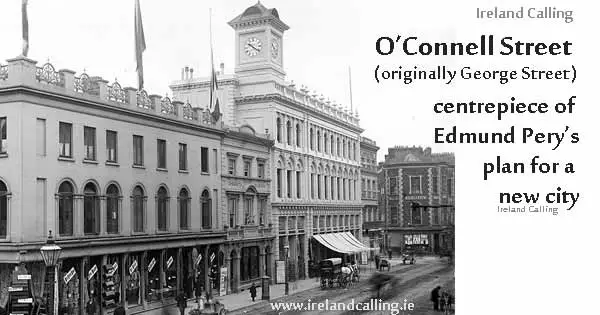
* * *
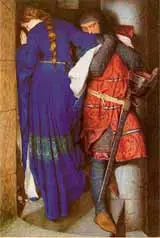 1816 Sir Frederick William Burton was born on this day in County Clare in 1816. He was a talented artist and some of his work can still be seen at the National Gallery of Ireland in Dublin.
1816 Sir Frederick William Burton was born on this day in County Clare in 1816. He was a talented artist and some of his work can still be seen at the National Gallery of Ireland in Dublin.
Burton was the director of the National Gallery in London for 20 years, in which time he commissioned the purchase of paintings by great artists including Leonardo da Vinci and Raphael.
He added more than 500 paintings to a series of Early Italian pictures in the gallery while he was employed there.
Burton’s watercolour, Meeting on the Turret Stairs was voted the Irish public’s favourite painting in a 2012 poll.
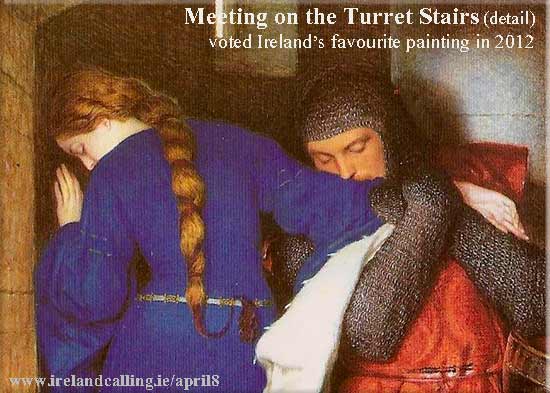 * * *
* * *
1861 On this day in 1861, Scottish landlord John George Adair ordered 44 families from their homes in Derryveagh, County Donegal. He had recently built Glenveagh Castle, and felt that the ‘black houses’ in the surrounding grounds ruined the landscape of his land.
Three days and 203 police enforcers later, 244 people, which included 159 children, were homeless and without the money to find new places to live. Many relocated to Australia, and some were taken pity on and offered beds by other local residents. The event became known as the Derryveagh Evictions.
Click here to read more about the history surrounding Glenveagh Castle
Read the full story here and see video and interviews with descendants of the victims.
* * *
1908 Thomas Walsh died in Washington DC on this day in 1908. He was born in Tipperary before emigrating to America. He moved to Colorado and began making money in the lucrative gold mining industry, not as a miner but trading in equipment and tools at inflated prices.
Before long though, Walsh got involved in the actual mining. He took a systematic, methodical approach to ensure the land was efficiently mined, and all the gold was extracted from the ground. He discovered one of the largest gold mines in America.
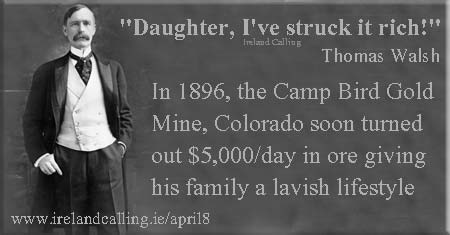
His daughter wrote a book, Father Struck it Rich, which was reportedly what he came home and said to her after he first realised his mining approach was going to be successful. Walsh became incredibly wealthy and he and his family enjoyed a life of luxury.
* * *
1951 A census published on this day in 1951, revealed the population of the Republic of Ireland was 2.9m, meaning it had more than halved in 110 years. The country had a population of more than 6m according to an 1841 census, but millions died as a result of the ‘Great Famine’ and millions more were forced to emigrate.
* * *
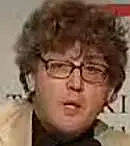 2003 Northern Irish poet, Paul Muldoon was awarded the Pulitzer Prize for poetry on this day in 2003 for his work, Moy Sand and Gravel. The Co Armagh-born writer has been compared to Seamus Heaney, and was once described as “among the few significant poets of our half-century” by the Guardian newspaper.
2003 Northern Irish poet, Paul Muldoon was awarded the Pulitzer Prize for poetry on this day in 2003 for his work, Moy Sand and Gravel. The Co Armagh-born writer has been compared to Seamus Heaney, and was once described as “among the few significant poets of our half-century” by the Guardian newspaper.
Click here to read about more great Irish writers
Click here to read Ireland’s 100 favourite poems
Poet Paul Muldoon reads from Moy Sand and Gravel.
april-bottom.html
